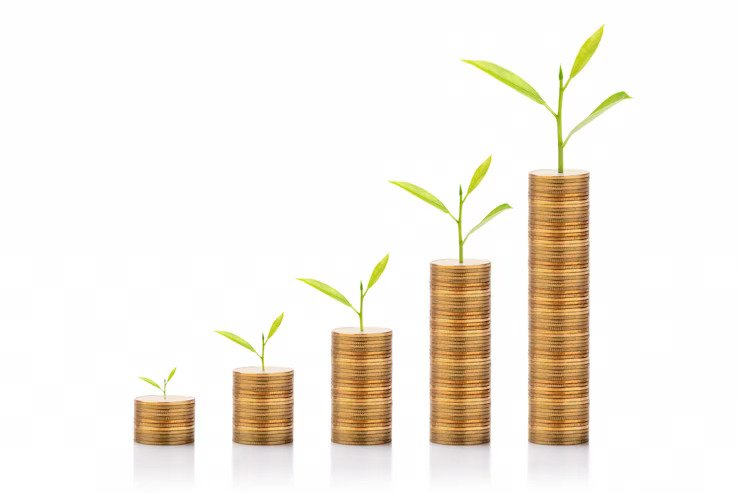How Much Money Do You Need To Start Investing?

Building up your wealth is always a good idea, regardless of whether you want to save your money for a specific purchase or invest it in your future over several years.
However, due to low-interest rates and inflation, the classic savings account is no longer the best way to make a profit. Often the possibilities of investing money are not properly exploited, because many new investors believe that investing can only work if you find the best JSE shares to buy and invest in them several thousand dollars a month.
So, How Much Money Should I Invest as a Beginner?

How much money you should invest depends on your financial goals and your risk tolerance. If you want to invest for the short term, you may be able to take on more risk. This means you can invest in more volatile assets such as stocks. While these types of investments are risky, they also offer great potential for gains.
Your options here also depend on when you want your investment to generate profit. If you have a longer investment horizon available, here’s what you should focus on:
- More conservative investments such as savings accounts, real estate, or gold;
- Diversify among different types of assets;
- Consider your goals and risk tolerance when making investment decisions.
The amount of money you invest in this regard depends primarily on the factors already mentioned. In addition to the assets you have available for investment, you should always make a careful analysis of the market situation. For example, although fixed-term deposits are a relatively safe form of investment, they have also been yielding significantly lower returns for several years.
Regardless of your financial goals, you need always remember that you should only invest money that you can afford to lose. This way, you can protect yourself from financial ruin if your investments do not perform as well as you had hoped.
In What Should You Invest?

There are many assets that you can invest in but if you have a limited budget we recommend concentrating on the following.
1. Stocks
When investors buy stocks, they are purchasing shares in a company. Stocks tend to be more volatile than other investments, so they rise and fall in value more quickly. However, over the long term, stocks have historically performed very well.
2. Bonds
Bonds are debt instruments that are usually issued by governments and corporations. When investors buy a bond, they lend money to the issuer of the security. In return, the issuer agrees to pay interest when the bond matures. Bonds tend to be less volatile than stocks and do not rise and fall in value as quickly.
3. Mutual Funds
In mutual funds, the money of several investors is put into a kind of pot. The fund manager, who is responsible for managing the fund, then chooses one or more securities in which to invest.
4. Exchange Traded Funds (ETFs)
ETFs are funds that are traded on an exchange. Several securities from different companies are combined into a portfolio in which investors can then invest.
3 Tips for Investing

There are many ins and outs to investing. A beginner might be confused about where to actually start so here are 3 tips that will help you.
A. Have a Plan
Before you invest money you should define your goals and create an investment plan. Define what you want to achieve with your money investment. Do you want to speculate and are you prepared to accept significant losses if necessary? Would you rather invest your money in the short term or do you want to build up a small fortune in the long term? Are small returns enough for you?
The type of investment depends on the answers to these questions. Investing in a mutual fund, for example, only makes sense if you have an investment horizon of several years, otherwise, the costs are too high for a short-term financial investment.
B. Diversify
One of the most important tips in investing is to diversify. This means that you should have a mix of different investments such as stocks, ETFs, real estate, and others. By spreading your money across different types of investments, you can reduce your risk and potentially increase your effective return. For example, if you experience a drought in the stock market, this can be offset by smart real estate investing.
C. Research Before Investing
Analyzing and researching stocks enables you to find the best investment opportunities. By using several analytical methods, we can try to find stocks that currently have a price lower than their real value and are therefore an excellent way to generate great returns in the future.
What Risks Should I Know About When Investing?

On the one hand, investments offer opportunities, but on the other hand, they always involve a certain amount of risk. Risks can be higher or lower depending on the line of business and the specific investment. How risk-tolerant are you? This is one of the many questions that you should answer.
When it comes to investments, for significant profits, a higher risk is necessary. Safe investments that yield very high profits quickly and at the same time without risk are almost impossible. The safer the investment, the lower the profit compared to more risky options.
This can be seen when comparing stocks and ETFs. With ETFs, the investment is spread over many companies listed in the corresponding index. The risk of a loss is reduced because the probability that the shares of all these companies will lose at the same time is comparatively low.
However, the profits are also lower since the index includes the overall picture of the companies’ profits and losses. It also requires more patience, as such investment models are more likely to yield returns over time.
If the investor only buys shares of one or a few companies, they can achieve high profits through a rapid increase in value. However, they lose money just as rapidly when the stock goes down.
Final Thoughts
Potentially, you can start investing even with $100 in your pocket. But we recommend having at least $500 for the initial investment. This amount will allow you to properly diversify your portfolio and ensure that you do not lose everything if something unexpected happens.
Also, those who want to increase capital should look first and foremost at the return on investment. After all, it determines the growth and the profits you get after a few years.
Read Also:










